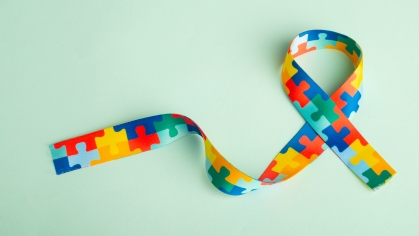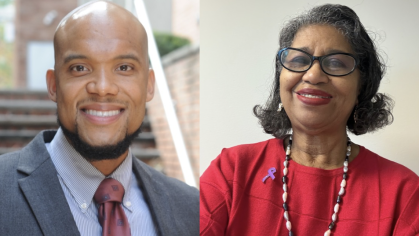Author Chimamanda Ngozi Adichie (2009) highlighted the dangers of viewing people via a single story lens. “Show a people as one thing, over and over again, and that is what they become,” she said. Her words resonated with me while I was writing this essay. Individuals living with HIV are usually viewed through a single-story lens, such as people who are not a part of the heteronormative Euro-Caucasian identity, attaching a negative social meaning to this infection (Berger et al., 2001). This narrative is entirely false (CDC, 2020a), yet HIV bias and stigma remain prevalent, reinforcing a negative single story about those with HIV. Living with HIV is a unique experience for every person; having this infection cannot be categorized in a single story. One’s journey living with HIV is remarkable; therefore, telling their story from a single story lens would be a disservice to them.
For thirty years, I have been honored and privileged to be an infectious disease social worker who continues to meet unique individuals who are empowering, brave, spiritual, bold, and living with HIV. With their permission, they would like for me to share what life with HIV means to them, and I will demonstrate how their stories are interwoven. Although their stories are real, their names have been changed to protect their identities.
Before you read the stories, what stereotypical stigmas, biases, or experiences have shaped your view of individuals living with HIV? Keep this question in mind as you read the stories below and consider how you would create an alternative narrative describing what the initials HIV mean to individuals living with HIV. Reconstructing a new narrative about individuals living with HIV leads to dismantling the single story lens, increasing awareness, and lessening bias.
Humble Insightful Victorious
Caroline is a 60-year-old cisgender female who has been living with HIV for more than ten years. She reflected upon the evening when she received the diagnosis as humbling, yet it also broke her body, mind, and soul. Numerous obstacles stood in her way, such as her being unhoused, underemployed, and in an abusive relationship, but she used her spiritual connectivity to move forward into victory. This diagnosis freed her from the stagnation she experienced, empowering her to put herself first. She says the diagnosis made her reflect and draw on her Christian faith, seeing her connection with God and those around her who supported her post-diagnosis. “Getting this diagnosis saved my life; even though it broke my body and disabled me, it humbled me to know I have a second chance, and I am using this opportunity to spread positivity,” Caroline said. She is pursuing a master’s degree in divinity, something she would not have done without having the virus. To Caroline, HIV signifies a humble, introspective viewpoint of getting closer to God.
Heavenly Invincible Visionary
Ronald, a cisgender male in his fifties who has been living with HIV for 30 years, describes living with HIV as a form of reincarnation. In the 1990s, he was on the verge of death on two occasions due to progressive cancer in his brain and a devastating case of pneumonia in his lungs. Relying on rehabilitation, faith, healing journeys, and making amends with his body, Ronald embraced each new day as an opportunity. He self-identified as “blessed and highly favored,” focusing on bibliotherapy strength and resilience, carrying him through challenging times. He often recounts the poem “Footprints in the Sand,” personalizing this narrative as God takes him through his most profound moments. Ronald shares his story in the HIV community venues across New Jersey, educating those about his third chance at life, hoping to spread a positive message about living with HIV.
Horrific Illness Vilified
Vincent is a 50-year-old cisgender male who has been living with HIV for almost 25 years. He views this disease as an aggressive “grim reaper” lurking over him every single day. This diagnosis has stunted not only his physical health but also his emotional growth. He stays transfixed on the age and stage at which he was during his diagnosis, longing for who he was and blaming this virus for holding him back all these years. He views HIV as a horror that is infinite and obscures his path of growth and all relationships in his life, leaving him to live in isolation. He stays transfixed on defining himself by the societal stigmas from years ago, causing him to feel ashamed, sickly, infectious, and rejected by society.
Hated Introverted Victim
Melisa is a cisgender female in her sixties who has been living with HIV for almost 30 years. Like Vincent, she mourns her pre-diagnosed self, longing for a “second chance” as living in the shadow of HIV stigma stunted her adult years. She views herself through the stigmas of being dirty, unlovable, and worthless. Stigma engulfs so many individuals living with this virus, immobilizing not only their developmental process but relationships and connections as well. Melisa shared she cannot move forward in relationships for fear of others knowing. She adds that her identity as an economically sound Caucasian female living with HIV is not part of the stereotyped vision of those living with HIV.
Healing Invisible Victory
A newly diagnosed woman I met last week, Sherry, quickly came to an understanding and acceptance of the virus, which has been raging in her body for more than ten years, unbeknownst to her. It was transmitted to her from her spouse, who died more than ten years ago. Barely able to communicate or ambulate, we met at the height of her infection, her body battling pneumocystis pneumonia, COVID-19, and tuberculosis. Yet the strength she derives to meet each new day comes from her divine connection and relationship with God. As she rests in the hospital, receiving care, she reads her Bible, reflecting on a passage: “Life encounters dispersed are weighted and bearable, knowing God will pull each one through.” Lurking alongside her HIV diagnosis is the negative societal stigma that prevents her from disclosing the diagnosis to anyone in her life. They only know of COVID-19 and tuberculosis, not of HIV. She insists the HIV disease remain hidden and invisible, and Sherry is vehemently opposed to sharing it with anybody close to her. Meanwhile, she trusts that the right path will open before her.
HIV is the acronym for “Human Immunodeficiency Virus,” and these letters ignite societal bias, stigmas, and prejudices. Each story listed above exemplifies the myriad narratives of individuals living with HIV. December 1st is World AIDS Day, and even though those living with the virus share a diagnosis, each person has their unique narrative. I urge you to explore how you respond, react, embrace, or reject the stigma surrounding HIV. The CDC (2022b) suggests that all individuals ages 13 and older get an HIV test annually, so the next time you go to your healthcare provider, ask for an HIV antibody test as a part of your routine healthcare screening. Otherwise, HIV will remain within the silo of secrecy, emboldening negative societal stigmas.
Awareness leads to advocacy and breaking societal stigmas and biases, and this path begins with us. Make a pact to break free from viewing HIV as a single story, engage with those living with the virus, explore their stories, and be of service to them as we, as social workers, have been called to do.
References
Berger, Barbara B., Ferrans, Carol E., Lashley, Felissa R. (2001). Measuring Stigma in People With HIV: Psychometric Assessment of the HIV Stigma Scale, Research in Nursing & Health, 24, 518-529. https://onlinelibrary.wiley.com/doi/pdf/10.1002/nur.10011
Center for Disease Control, HIV by Group. (2022a). https://www.cdc.gov/hiv/group/index.html
Center for Disease Control, HIV testing. (2022b). https://www.cdc.gov/hiv/testing/index.html
Footprints in the Sand (2010). OnlytheBible.com. https://www.onlythebible.com/Poems/Footprints-in-the-Sand-Poem.html
Ngozi Adichie, Chimamanda (2009). The Danger of a Single Story, TEDGlobal. https://www.ted.com/talks/chimamanda_ngozi_adichie_the_danger_of_a_single_story?language=en
This story was created in partnership with Rutgers School of Social Work's Inclusion, Intersectionality, Diversity, Equity, and Advancement (IIDEA) Committee.



